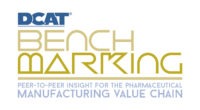What’s Trending in Pharma: A Top 10 Watch List for 2019
As 2018 comes to a close, what are key trends and emerging areas of interest for the pharmaceutical industry overall and in manufacturing? From new business models in healthcare delivery, to drug pricing, to digital transformation, to new partnership and alliance strategies, DCAT Value Chain Insights provides its Top 10 Watch List for 2019.
Top 10 Watch List for 2019
1. New business models in healthcare delivery. Market solutions to reduce healthcare costs to achieve a competitive advantage was the driving force behind the $69-billion merger of CVS Health Corporation (CVS), the largest retail pharmacy chain in the US, and Aetna, the third-largest health-insurance company in the US, a deal that closed in late November (2018). The companies gained conditional approval for the deal from the US Department of Justice (DOJ) in October under the condition that Aetna divests its Medicare Part D prescription drug-plan business (Aetna sold that business to WellCare Health Plans), and the companies subsequently received state regulatory approvals to close the deal.
One potential issue, however, for the deal arose in early December 2018 when U.S. District Judge Richard Leon for the District of Columbia set a hearing for December 18, 2018, when he will consider ordering the companies to keep their assets separate until he weighs approval of the antitrust settlement with the government. A federal law known as the Tunney Act requires court approval of settlements the DOJ reaches with merging companies to resolve competition issues. Although the law does not prohibit companies from closing and integrating operations while the settlement is considered, it does raise concerns whether further conditions or terms may impact the merger. The judge ordering the hearing had raised concerns that the DOJ’s requirement for Atena to divest its Medicare Part D prescription drug-plan business would be insufficient to address anticompetitive issues.
From a healthcare delivery model, the combined company’s vertical integration is seen as a way to improve how primary care and chronic disease management is developed and implemented on a community level. CVS operates the nation’s largest retail pharmacy chain, owns a large pharmacy benefit manager called Caremark, and is the nation’s second-largest provider of individual prescription drug plans, with approximately 4.8 million members. CVS earned revenues of $185 billion in 2017. Aetna is the nation’s third-largest health-insurance company and fourth-largest individual prescription drug-plan insurer, with over two million prescription drug plan members. Aetna earned revenues of approximately $60 billion in 2017, according to information from the DOJ.
In announcing the close of the deal on November 28, 2018, CVS said it has begun to put the foundational pieces of its new healthcare model in place and, in the coming months, will introduce new programs and services designed to increase access to care, improve health outcomes and reduce medical costs for all consumers. In particular, the company said that these programs will “target better, more efficient management of chronic disease using the networks, technology and the people of the combined company.”
The CVS-Aetna mega merger was not the only mega deal in 2018. In September 2018, the DOJ approved the $52-billion acquisition of Express Scripts, a pharmacy benefit manager, by Cigna, a health insurer. The deal received shareholder approval in August 2018 and is expected to close by the end of 2018. The companies had announced the deal in March 2018.
The CVS-Aetna and Cigna-Express Scripts deals reflect ongoing consolidation in the healthcare market and the rise of business models to deliver increased access and lower costs. Other players are tackling healthcare costs through new partnerships. In January 2018, JPMorgan Chase & Co., Berkshire Hathaway, and Amazon announced a partnership to form a new healthcare company to provide healthcare for their US employees with the aim of improving employee satisfaction and reducing costs. The three companies plan to pursue this objective through an independent company that they said will be “free from profit-making incentives and constraints.” The initial focus of the new company will be on technology solutions that are expected to provide US employees and their families with “simplified, high-quality, and transparent healthcare at a reasonable cost,” said the companies in a January 30, 2018 statement. The new venture named Atul Gawande, a surgeon and professor at Harvard University, as its chief executive officer in June 2018.
Key to watch for 2019 is how industry consolidation and new business models will deliver on the promise of lower healthcare costs, increased access to healthcare, and better health outcomes.
2. Policy reforms on drug pricing. The market response to address drug pricing is only one piece of the equation; the other is what role will public policy have in impacting drug pricing and market access. In 2018, several key moves were made to show how the policy debate is unfolding. Earlier this year (May 2018), President Donald Trump and the US Department of Health and Human Services (HHS) Secretary Alex Azar introduced their plan for addressing ways in which to improve the affordability and reduce the costs of prescriptions drugs. That plan called the American Patients First: The Trump Administration Blueprint to Lower Drug Prices and Reduce Out-of-Pocket Costs laid out four strategies: increasing drug competition, enhancing negotiation, creating incentives for lower list prices, and bringing down out-of-pocket costs.
Although not directly involved in drug pricing, the US Food and Drug Administration (FDA) is addressing those objectives through announced and proposed reforms to increase drug competition. In 2017, it announced its Drug Competition Action Plan that seeks to increase competition and improve access to generic drugs and since then has put forth several measures to improve the development and approval process for generic drugs. Some measures include: the publication of a list of off-patent, off-exclusivity branded drugs without approved generics; implementing a new policy to expedite the review of generic-drug applications where competition is limited; proposing reforms to the process for citizen petitions to eliminate misuse for blocking generic-drug competition; proposing ways to increase access of samples of branded drugs needed by generic-drug developers for testing; and proposing ways to increase transparency and reform elements of the REMS (Risk Evaluation and Mitigation Strategy) system to facilitate generic-drug development and approval.
HHS also moved forward with more specific proposals to address drug pricing under its blueprint. To create better incentives for list prices, the blueprint called for HHS to consider requiring the inclusion of list prices in direct-to-consumer (DTC) advertising. Currently, drug companies are required to disclose the major side effects of a drug but are not now required to disclose pricing. In October 2018 HHS proposed to require that television ads for prescription drugs include their list price.
In testimony earlier this year (June 2018) before the US Senate Committee on Health, Education, Labor and Pensions, HHS Secretary Azar highlighted measures in the Administration’s blueprint to address high list pricing by removing rebates. “We may need to move toward a system without rebates, where PBMs [pharmacy benefit managers] and drug companies just negotiate fixed-price contracts,” Azar said during the June 12 hearing. “Such a system’s incentives, detached from these artificial list prices, would likely serve patients far better, as would a system where PBMs receive no compensation from the very pharma companies they’re supposed to be negotiating against,” Azar said.
In 2019, look for the drug-pricing policy debate to continue with further implementation or proposals for reform.
3. Changing fortunes of US generics market. Always a cost-competitive market, the generics market, particularly the US market, is posing margin and pricing pressures on generic-drug companies. Novartis’ Sandoz, Teva, Mylan, and Perrigo were among the companies reporting lower revenues in their generics businesses in 2018, principally due to performance in the US market, and revamped their strategies to respond.
In September (2018), Novartis agreed to sell select portions of its Sandoz US portfolio, specifically the Sandoz US dermatology business and generic US oral solids portfolio, to Aurobindo Pharma USA for $1 billion, consisting of $900 million in cash plus $100 million of potential earn-outs. In August (2018), Mylan formed a strategic review committee to evaluate alternatives for its businesses following weak performance in its North American segment. Mylan says the profile of the company has changed over the last several years by shifting its core from a US-centric operation to an international presence. Price erosion and increased product competition in the US generics market was a key factor behind a two-year restructuring plan, announced by Teva in December 2017, which began implementation in 2018 and included a reduction of 25% of its workforce or 14,000 positions globally, closures or divestments of research and development facilities and offices, and a $3-billion reduction in its annual costs. In August 2018, Perrigo announced plans to separate the company’s prescription (Rx) pharmaceuticals business, which consists primarily of generics, following a strategic portfolio review.
With market fundamentals still difficult, how the US generics market shapes out with announced and considered restructuring will be a key issue to watch for in 2019.
4. Brexit and the pharmaceutical industry. The implications of the UK withdrawing from the European Union (EU) (i.e., Brexit) took a marked turn this past week when British Prime Minister Theresa May postponed the scheduled Parliament vote on a Brexit deal that she had struck with the EU. The UK is scheduled to leave the EU on March 29, 2019, and the Brexit deal, which has to be approved by the UK Parliament, was headed for likely defeat and therefore the vote was postponed.
The vote will now be held before January 21, but an exact date has not been set. The EU Withdrawal Act, which incorporates Brexit into UK law, requires the prime minister to give an update on Brexit by January 21 if her deal is rejected or if talks with the European Union break down. What will happen next is still unfolding as of press time. Conservative lawmakers in Britain will hold a no-confidence vote on Prime Minister Theresa May on December 12, 2018. How that vote materializes will impact whether the UK proceeds with Brexit and the deal that the Prime Minister had negotiated with the EU.
Throughout the negotiation process, pharmaceutical industry leaders called for an orderly implementation relating to the regulation, manufacture, and supply of medicines post Brexit. In July (2018), the chief executive of The Association of the British Pharmaceutical Industry (ABPI), which represents innovator and research-based pharmaceutical companies in the UK, and leaders from seven other UK and European pharmaceutical and life-science industry bodies, wrote a joint letter to the UK and EU Brexit negotiation teams to underscore the importance of securing ongoing cooperation between the UK and EU on medicines in the wake of Brexit.
That interest was further underscored following the breakdown in the UK for approving a Brexit deal. “The focus of pharmaceutical companies is on making sure that medicines and vaccines get to patients whatever the Brexit outcome,” said Mike Thompson, Chief Executive of the ABPI in a December 10, 2019 statement. “We are working as closely as possible with Government on ‘no deal’ planning and continue to look for further guidance on how medicines will be prioritized as new supply routes are put in place. But we reiterate that a ‘no deal’ Brexit would present very serious challenges and this must be avoided. Politicians need to find a way through the current impasse and reassure patients that medicines will not be delayed or disrupted come March 2019.”
5. Trade relations with China and pharmaceutical industry impact. How rising trade tension between the US and China plays out will be a key issue for 2019. New restrictive trade policy measures have resulted in marked changes in trade flows and prices in some targeted sectors, particularly in the US and China, with some transactions being brought forward ahead of announced tariffs, according to a recent analysis by the Organization for Economic Co-operation and Development (OECD), an intergovernmental economic organization with 36 member countries. Policy announcements are also affecting business sentiment and investment plans, especially in manufacturing, and have added to uncertainty, according to the OECD report.
6. Innovation and the pharmaceutical industry. 2018 has thus far been noteworthy for a record-setting number of approvals of new molecular entities (NMEs) by the US Food and Drug Administration’s (FDA) Center for Drug Evaluation and Research (CDER). FDA’s CDER has approved 55 NMEs thus far in 2018 (as of November 28, 2018), breaking the previous recent high of 53 NME approvals set in 1996 and outpacing the 46 NMEs approvals last year (2017). This year’s record-number of approvals continues an upward trajectory for NME approvals (with the exception of 2016) over the last several years. In 2014, FDA’s CDER approved 41 NMEs in 2014, 45 NMEs in 2015, 46 NMEs in 2017, and the 55 NMEs thus far in 2018 (in 2016 only 22 NMEs were approved). Though numbers alone do not tell the story of the composition of those NME approvals, the uptick in NME approvals is an important development for the industry. Key question for 2019 is will the innovation curve continue?
7. Real-world data in drug development. An important issue for 2018 and again for 2019 will be the challenge presented to pharmaceutical and life-science companies of their ability to collect and use real-world data for which patient health and outcomes data are gathered outside of randomized controlled trials. A PwC analysis points out that the FDA routinely accepts real-world data for postmarket commitments, such as safety monitoring, but had not used such an approach for new drug approvals or label revisions. The 21st Century Cures Act of 2016, which requires the FDA to consider additional uses of evidence drawn from real-world data for drugs and devices, changed that, and earlier this month (December 2018), the FDA issued a framework for applying the law to drug companies.
The new approach, the Framework for the Real-World Evidence Program, applies across FDA’s drug and biologic review programs. FDA says the framework is aimed at leveraging information gathered from patients and the medical community to inform and shape the FDA’s decisions across its drug and biologic development efforts. “This strategic Framework will form a cornerstone of our efforts to advance the use of these tools. In the coming months, we’ll advance other new initiatives to better leverage RWD [real-world data] and RWE [real-world evidence] in our programs,” said the FDA Commissioner Scott Gottlieb in a December 6, 2018 agency statement.
8. End-to-end pharmaceutical service business models. In 2018, the industry saw another contract development and manufacturing organization/contract manufacturing organization (CDMO/CMO), Cambrex, make a large play in becoming an end-to-end provider offering development and manufacturing services for active pharmaceutical ingredients (APIs) and drug products through its $425-million acquisition of Halo Pharmaceuticals and pending $252-million acquisition of Avista Pharma Solutions. The addition of Halo added formulation development and finished-dosage manufacturing capabilities to Cambrex’s existing global API manufacturing network. Avista offers a suite of services ranging from API and drug-product development and cGMP manufacturing to stand-alone analytical, microbiology testing and solid-state sciences. The acquisition of Avista supports Cambrex as a fully integrated small-molecule contract development and manufacturing organization across the entire drug lifecycle.
The end-to-end model was also pursued and implemented by other companies with key recent deals in 2017: Lonza’s $5.5-billion acquisition of Capsugel, a provider of dosage forms, and Catalent’s $950-million acquisition of Cook Pharmica, a CDMO of biologic drug substances and parenteral drug products. They joined other established end-to-end providers of APIs and drug products, such as Alcami, Thermo Fisher/Patheon, AMRI, CordenPharma, Siegfried, Almac, and Piramal Pharma Solutions, among others.
The question going forward is will more CDMOs/CMOs make end-to-end moves in 2019?
9. The performance of the US pharmaceutical industry. The US is the largest national market in the global pharmaceutical industry, so how the industry performs is key to the overall strength of the industry. Spending growth in the US slowed in 2017 due to lower price increases for protected branded products, price declines for generics, and less growth from new products despite a large increase in the number of new product launches, according to a recent analysis by IQVIA. In 2017, spending grew 0.6% net of off-invoice discounts and rebates as invoice-level growth slowed to 1.4%, according to the IQVIA analysis. Overall, spending reached a total of $453 billion on a gross invoice basis but $324 billion on a net basis. Discounts, rebates, and other price concessions on branded medicines reduced absolute invoice spending by an estimated 28% to $324.4 billion. When adjusted for off-invoice discounts and rebates, population and economic growth, real net-per-capita drug spend declined by 2.2% in 2017 and had a compound annual growth rate (CAGR) of only 1.0% during the past decade. Retail prescription drugs accounted for $212 billion in net spending in 2017, reflecting a 2.1% decline from 2016.
IQVIA projects a modest overall increase of 2% to 5% in US net spending during the next five years through 2022, with 1% to 4% percent growth in retail and mail-order prescription drugs. That is expected to drive overall medicine spending in the US to an estimated range of $550 billion to $600 billion by 2022, or $380 billion to $410 billion on a net basis.
10. Information technology and drug development. Time to market is a crucial measure for pharmaceutical companies and ways to accelerate or improve the drug-development process are highly valued. The use of artificial intelligence and machine learning to better predictive models have great promise but how their potential will be realized is a key question for 2019 and beyond.






